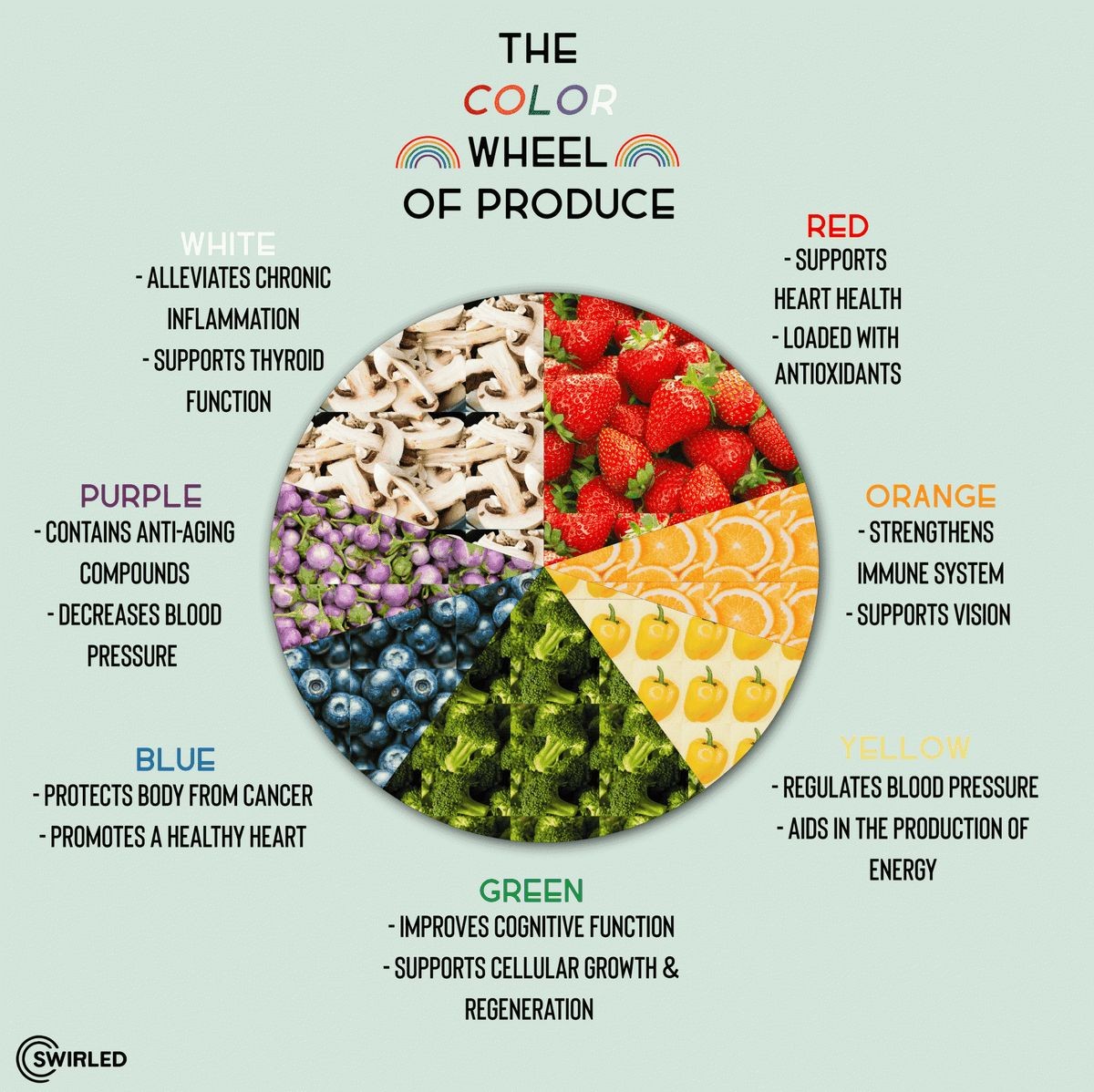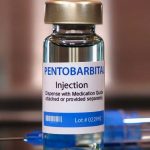
Contents
The Color of Food, Fruits, and Vegetables and Their Associated Vitamins
Eating colorful fruits and vegetables can extend your life. Different produce colors have various vitamins and nutrients linked to multiple health benefits.
Health experts often advise consuming a “rainbow" of fruits and vegetables. Colorful foods don’t just make your meal look appealing — they can also help you live longer. Highly pigmented foods obtain their color from beneficial plant compounds called phytonutrients. These compounds protect plants from threats in their environment and can protect you by reducing the risk of chronic disease and certain cancers. For example, red vitamins in foods like strawberries and tomatoes may safeguard against heart and lung disease. Each color provides different benefits, so aim to include as many colors in your diet as possible.
Red and pink fruits and vegetables are rich in lycopene, a phytonutrient associated with vitamin C. Foods high in vitamin C may enhance your immune system and reduce systemic inflammation in your body, which is linked to various diseases such as cancer, neurological abnormalities, cardiovascular diseases, diabetes, pulmonary diseases, obesity, and immunological diseases. The nutrients most often found in red fruits and vegetables include anthocyanidins, ellagic acid, hesperidin, lycopene, quercetin, vitamin C, vitamin A, and potassium.
A review of studies showed that red fruits and vegetables are also linked to improved cholesterol levels and reduced pain from osteoporosis. To reap these benefits, try red apples, tomatoes, red beets, red bell peppers, raspberries, cherries, strawberries, watermelon, and pomegranate.
Orange Nutrients
Orange-colored fruits and vegetables are packed with phytonutrients including beta-carotene (vitamin A), vitamin C, zeaxanthin, flavonoids, lycopene, and potassium. These nutrients provide various health benefits including lowering the risk of prostate cancer, promoting eye health, supporting collagen formation and healthy joints, boosting the immune system, lowering blood pressure and bad cholesterol, and contributing to healthier bones. Orange fruits and vegetables include carrots, orange bell peppers, pumpkin, sweet potatoes, turmeric, yams, blood oranges, cantaloupe, kumquat, mangoes, oranges, peaches, and persimmons.
Green Nutrients
Green leafy vegetables like kale are considered "super foods" due to their high nutrient content. However, the benefits of chlorophyll and lutein — the phytonutrients responsible for the green color of fruits and vegetables — are not limited to kale and spinach. Green produce contains vitamins A, B, C, E, and K, potassium, iron, calcium, manganese, epigallocatechin gallate (EGCG), indoles, isoflavones, isothiocyanates, lutein, and sulforaphane. The nutrients in green fruits and vegetables are particularly beneficial for heart health, lowering blood pressure, improving blood flow, and enhancing exercise tolerance. Top greens for health include kale, broccoli, spinach, Brussels sprouts, asparagus, green grapes, and kiwi fruit.
Blue and Purple Nutrients
If you want to boost brain health and mood, consuming blue and purple plants can help. These fruits and vegetables get their rich color from anthocyanins and vitamin C. Anthocyanins have been associated with living longer, better cardiovascular health, cancer prevention, vision protection, and improved memory and cognition. Studies have shown that grape juice improves cognitive function in older adults, enhances spatial memory and driving performance in mothers, and improves reaction time in healthy young adults. Blueberries have also been linked to better performance on vocabulary tests among 7 to 10-year-old children and improved mood in children and adults. Blue and purple fruits and vegetables containing anthocyanins and other beneficial phytonutrients include blackberries, blueberries, figs, prunes, purple grapes, eggplant, purple cabbage, and purple kale.
White and Brown Nutrients
While not traditionally considered rainbow colors, white and brown produce are high in disease-fighting nutrients such as potassium, beta-glucans, fiber, lignans, and epigallocatechin gallate. Fiber is essential for digestive health, while potassium helps with muscle function and promotes heart health. Garlic contains allicin, a compound with antioxidant, antimicrobial, and anticancer properties. It may also protect against nerve damage and prevent neurodegenerative diseases. White potatoes are rich in potassium and magnesium, which can help prevent diseases and high blood pressure. To improve your health, include bananas, cauliflower, garlic, ginger, jicama, mushrooms, onions, parsnips, potatoes, and turnips in your diet.
A healthy diet should include a variety of colors. While certain colors are associated with specific benefits, it is important not to focus on one color at the expense of others and exclude certain kinds of nutrients. Most adults do not consume enough fruits and vegetables, especially in the blue and purple category, and subsequently lack phytonutrients. The federal government generally recommends that adults consume about two cups of fruit and three cups of vegetables per day, encompassing various colors. Given the multitude of health benefits fruits and vegetables provide, it is worth examining your fruit and vegetable consumption habits and making your refrigerator more vibrant.
Sources:
[BBCgoodfood: "What are anthocyanins and why are purple foods so healthy?"](source)
[Harvard Health Blog: "Phytonutrients: Paint your plate with the colors of the rainbow."](source)
[A Healthier Michigan: "10 Reasons to Eat Orange and Yellow Fruits and Veggies."](source)
[Illinois Extension: "Eat white fruits and vegetables for better health."](source)
[Journal of Nutrition and Metabolism: "A Review of the Science of Colorful, Plant-Based Food and Practical Strategies for “Eating the Rainbow."](source)
[Penn Medicine: "Benefits of White and Brown Foods."](source)
[UT Health Houston: "Phyte away sickness with colorful fruits and vegetables."](source)
[UT Health Houston: "Phyte away sickness with colorful fruits and vegetables."](source)


